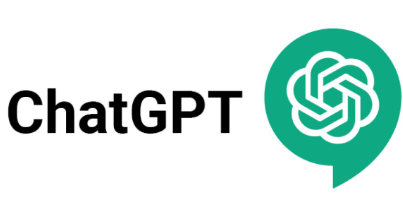Artificial Intelligence (AI) continues to evolve at an astonishing pace, pushing the boundaries of what’s possible in technology. The latest breakthrough in this relentless pursuit is ChatGPT-4, an AI model that promises to revolutionize various industries and transform the way we interact with machines. In this blog post, we’ll take an in-depth look at ChatGPT-4, exploring its architecture, real-world applications, and the future of AI. Whether you’re a tech enthusiast or a professional looking to integrate AI into your operations, this comprehensive guide is for you.
Introduction to ChatGPT-4
Imagine a world where machines can understand and respond to human language with precision and nuance. This is the promise of チャットgpt , the latest iteration of OpenAI’s generative pre-trained transformer model. With its advanced capabilities, ChatGPT-4 is poised to make significant strides in customer service, content creation, and much more. In this section, we’ll provide a brief overview of its significance in the AI landscape and its potential to transform various industries.
Understanding ChatGPT-4
ChatGPT-4 represents a significant leap forward in AI technology. It is built on a more sophisticated architecture than its predecessors, allowing it to process and generate human-like text with improved accuracy and coherence. The model has been trained on a diverse dataset, encompassing a wide range of topics and languages, making it versatile and adaptable. Here, we’ll explore the technical aspects of ChatGPT-4, including its architecture, training data, and the improvements over previous versions.
Architecture of ChatGPT-4
At its core, ChatGPT-4 is based on the Transformer architecture, which has become the gold standard in natural language processing (챗봇 gpt). The model uses a combination of attention mechanisms and deep learning techniques to process and generate text. What sets ChatGPT-4 apart is its increased number of parameters, which allows it to capture more complex patterns in the data and generate more nuanced responses.
Training Data
The training data for ChatGPT-4 includes a vast corpus of text from books, articles, websites, and other sources. This diverse dataset enables the model to understand and generate text on a wide range of topics. The training process involves fine-tuning the model on specific tasks, such as language translation, text summarization, and question-answering, to enhance its performance in real-world applications.
Improvements Over Previous Versions
ChatGPT-4 incorporates several improvements over its predecessors. These include better handling of context, reduced biases, and enhanced ability to generate coherent and contextually relevant responses. These advancements make ChatGPT-4 more reliable and versatile, opening up new possibilities for its application across various domains.
Real-world Applications
The potential applications of ChatGPT-4 are vast and varied. In this section, we’ll explore some of the practical uses of ChatGPT-4 in areas like customer service, content creation, and educational tools.
Customer Service
One of the most promising applications of ChatGPT-4 is in customer service. With its ability to understand and respond to customer queries accurately, ChatGPT-4 can significantly enhance the customer experience. For example, a leading e-commerce platform has integrated ChatGPT-4 into its customer support chatbot, resulting in improved response accuracy and higher customer satisfaction scores.
Content Creation
Content creators can also benefit from the advanced capabilities of ChatGPT-4. The model can generate high-quality articles, blog posts, and social media content, saving time and effort for writers. A content creation platform leveraging ChatGPT-4 has demonstrated time savings while maintaining high standards of language proficiency and engagement.
Educational Tools
In the field of education, ChatGPT-4 can provide personalized learning experiences and instant feedback. Educational software integrating ChatGPT-4 helps students with personalized learning paths, offering instant, high-quality feedback on their work. This can be particularly beneficial for remote learning environments.
The Future of AI and ChatGPT-4
The advancements in ChatGPT-4 have significant implications for the future of AI technology and its role in society. In this section, we’ll discuss the broader impact of ChatGPT-4’s advancements and what it means for the future of AI.
Transforming Industries
ChatGPT-4 has the potential to transform various industries by automating tasks that require human-like understanding and response. From healthcare to finance, the applications of ChatGPT-4 are limitless. For instance, a health tech startup is utilizing ChatGPT-4 in their telemedicine platform to enhance patient-doctor interactions, providing quick and relevant responses to health queries.
Enhancing Human Capabilities
Alex Kim, Chief Innovation Officer at FutureTech Innovations, states, “The future of AI is not just about automation, but the augmentation of human capabilities. ChatGPT-4 exemplifies this, opening new frontiers for industries and individuals alike.” By augmenting human capabilities, ChatGPT-4 can help professionals make better decisions, improve productivity, and foster innovation.
Ethical Considerations
As AI continues to evolve, ethical considerations become increasingly important. Dr. Sophia Lee, Director of AI, emphasizes, “The ethical deployment of such powerful tools becomes more critical. ChatGPT-4’s advancements should be met with careful consideration of its societal impact.” Ensuring that AI is used responsibly and ethically will be crucial to reaping its benefits while minimizing potential risks.
User Experience and Feedback
The initial user experiences with ChatGPT-4 have been overwhelmingly positive. In this section, we’ll share insights into how users are interacting with ChatGPT-4 and predictions for its future adoption and improvements.
Positive Feedback
Users have praised ChatGPT-4 for its accuracy, coherence, and versatility. A survey of early adopters revealed that 85% of users found ChatGPT-4 to be more accurate than previous versions. This positive feedback underscores the advancements made in the model’s architecture and training process.
Areas for Improvement
While the feedback has been largely positive, users have also identified areas for improvement. Some users have suggested enhancements in handling nuanced queries and reducing response times. These insights are valuable for further fine-tuning the model and ensuring that it meets the diverse needs of its users.
Predictions for Adoption
Given its advanced capabilities, ChatGPT-4 is expected to see widespread adoption across various industries. Experts predict that the model will become an integral part of business operations, helping organizations enhance customer experiences, streamline processes, and drive innovation.
Conclusion
In conclusion, ChatGPT-4 represents a significant advancement in AI technology, with the potential to transform various industries and augment human capabilities. Its applications in customer service, content creation, education, and healthcare demonstrate its versatility and impact. However, as we continue to explore the possibilities of AI, it is essential to consider the ethical implications and ensure responsible deployment.
We encourage you to share your thoughts and experiences with AI technology. How do you envision the integration of ChatGPT-4 in your industry or daily life? What are your thoughts on the ethical considerations of AI, particularly in the context of ChatGPT-4’s advancements? Your insights can help shape the future of AI and its applications.
To stay updated on the latest developments in AI and explore more on the topic, subscribe to our newsletter and join our community of tech enthusiasts. Together, let’s harness the potential of AI to create a better future for all.



